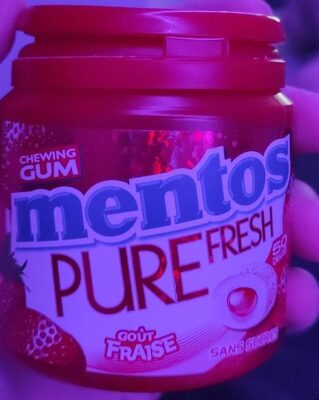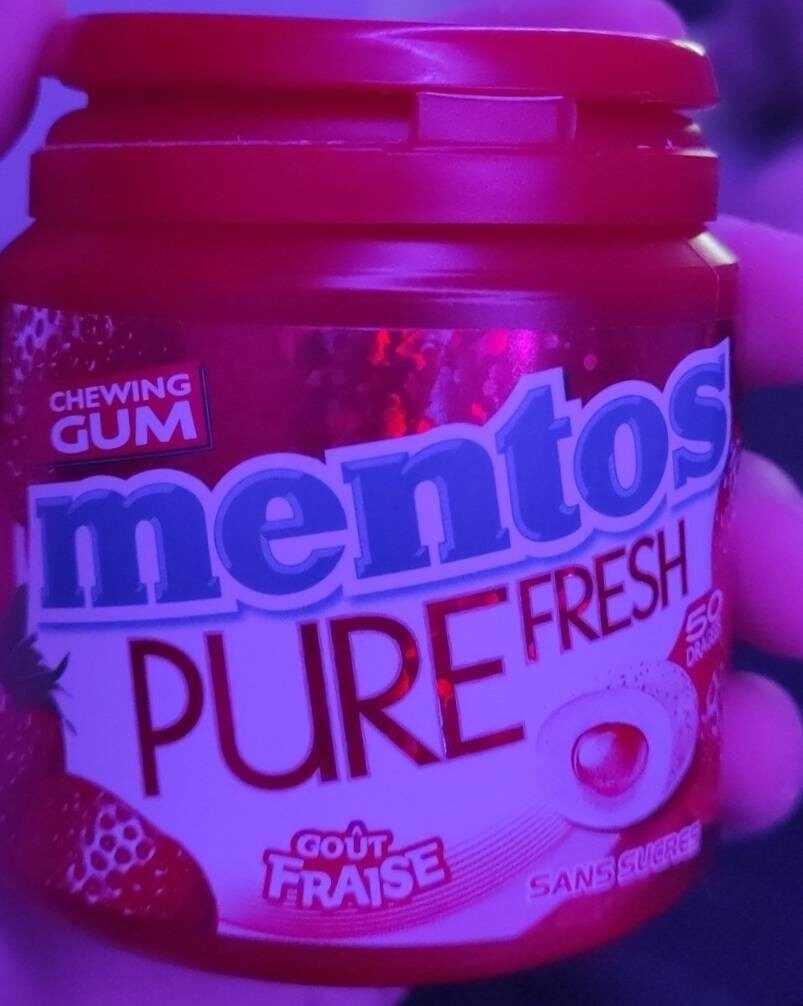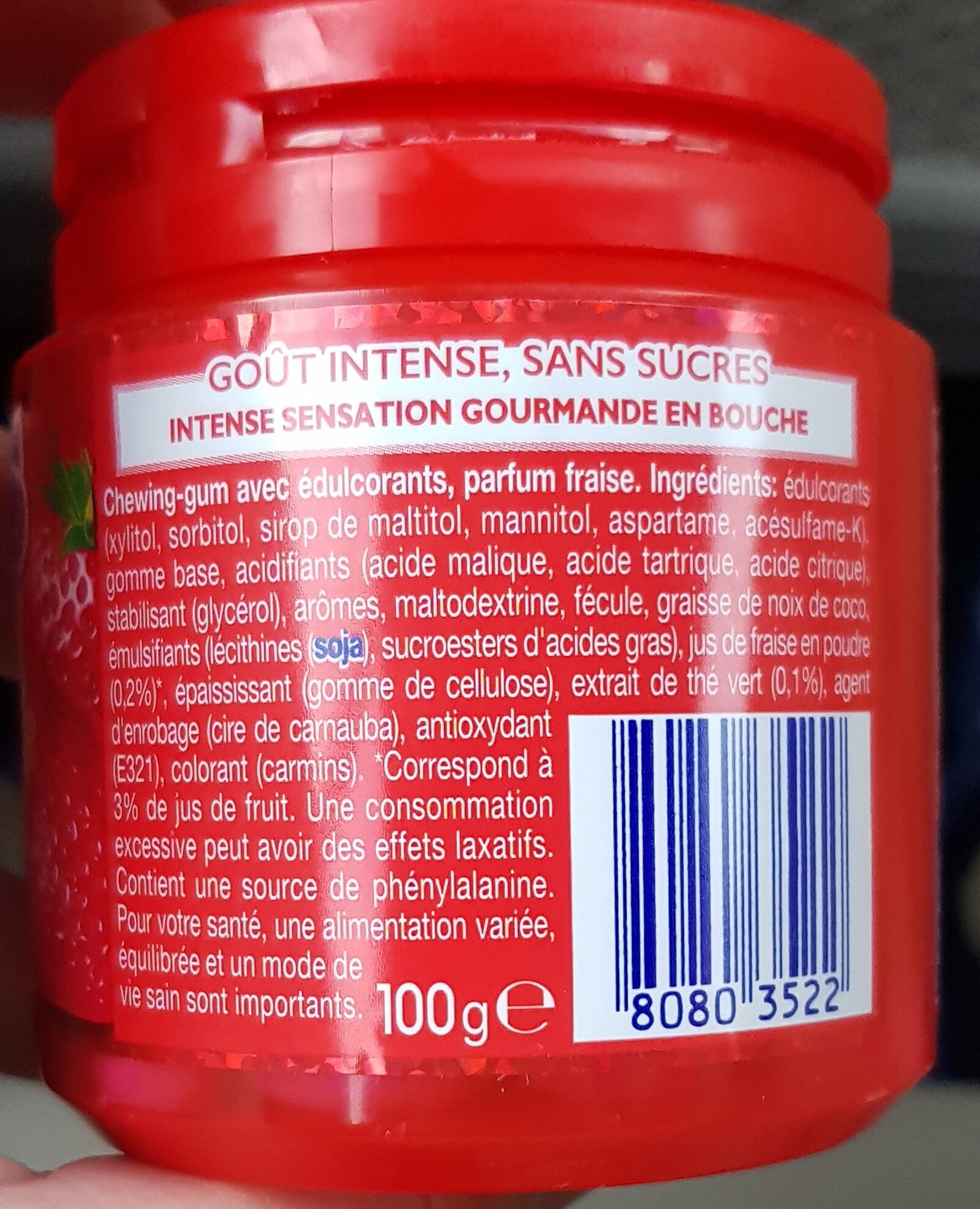gum mentos - mentos Goût Fraise 🍓 - 100g, 50 dragées
Barcode: 80803522
Quantity: 100g, 50 dragées
Packaging: fr:BOÎTE + LANGUETTE BAC DE TRI
Brands: mentos Goût Fraise 🍓
Categories: Snacks, Sweet snacks, Confectioneries, Fresh foods, Chewing gum, Sugar-free chewing gum, fr:Bonbons-🍬
Labels, certifications, awards:
Contains a source of phenylalanine, Excessive consumption can have laxative effects, fr:Entrepreneurs + Engagés, Triman
Origin of ingredients: fr:États-Uni 🇺🇸🇺🇲
Stores: Magasins U, Casino, carrefour.fr
Countries where sold: France
Matching with your preferences
Report a problem
Data sources
Product added on by openfoodfacts-contributors
Last edit of product page on by freezer.
Product page also edited by adrien25, dorado-jerome, driveoff, ecoscore-impact-estimator, g123k, inf, kiliweb, magasins-u, patryon, quechoisir, roboto-app, sebleouf, smoothie-app, teolemon, yuka.SGFjNVBKVVB1UGdCdmZBRzNULzQyUFlvNnJLS1hEdm1CTm92SVE9PQ, yuka.SGI0ZFRyNGVxOXc3aWZBWW8wUDgvL2N1N0ppcmYyK2xFT3NYSWc9PQ, yuka.SGJ3TEhmNGRyK2MybDhVam9ndjFwTXRwbUthRUEyUzBGZUZMSUE9PQ, yuka.WDZ3QVNxczl0L0pScGNWazRnbnMyWXBPK3Ezd1lsbVZEdlFTSWc9PQ, yuka.WHFrdlQ2QmJqUGRVb01GaTVDNk44ZGd0bTQ2S2NFcWFCOW9LSVE9PQ, yuka.ZHFSUUdaZ3FsdVpWc3NBZDFEclI5czRvK28rNFRUNklGUGhKSUE9PQ, yuka.sY2b0xO6T85zoF3NwEKvlkUbT-finwDmLCPVmxOm_vWyLK30Uf9gsrjFI6s, yuka.sY2b0xO6T85zoF3NwEKvlkhCa9nhjgrCBSHTvG-p4uyXD6b5etF32If8C6s, yuka.sY2b0xO6T85zoF3NwEKvlkllefrg-QrJHRzvsFHU18iCIb3ZSuB45dnBb6s, yuka.sY2b0xO6T85zoF3NwEKvlmdkWYL8phfHLzrTv22RwNmlDJ3VPOAt2bX3Lag, yuka.sY2b0xO6T85zoF3NwEKvlmtjVsSOiDn_MSXfi3bW7fOrBJn6T-5W07jBI6s, yuka.sY2b0xO6T85zoF3NwEKvln5aU-uGjy2UCh7WpG-Sn_yyLI7sWfpr3oTEa6o.











